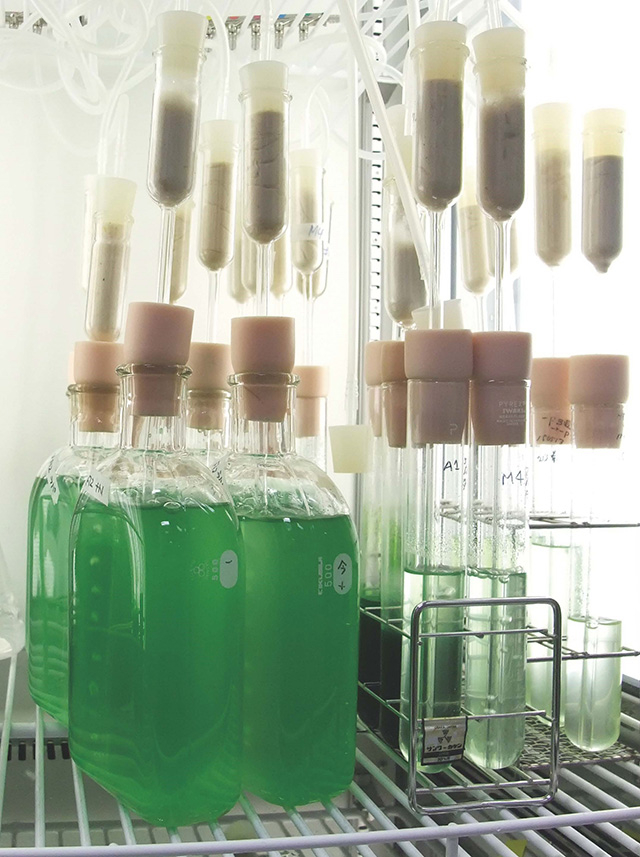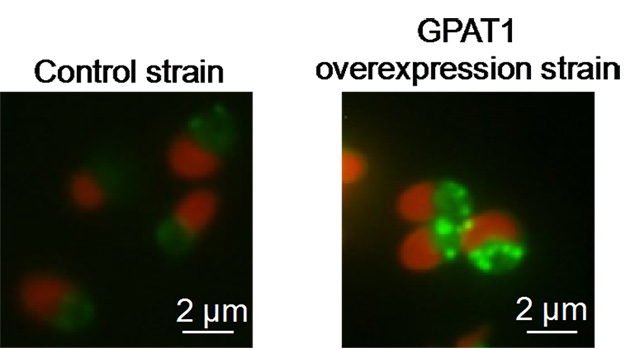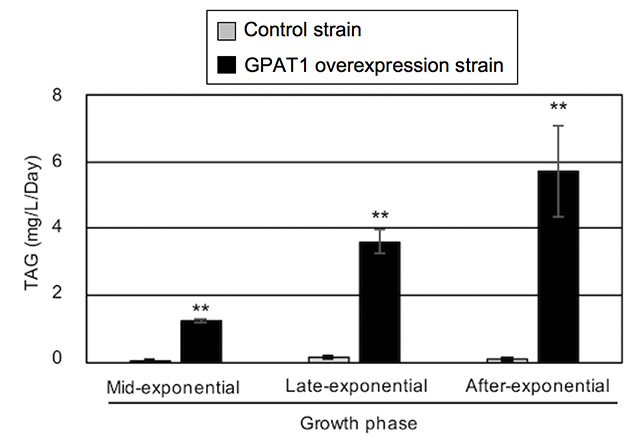Researchers at Tokyo Tech have honed in on an enzyme belonging to the glycerol-3-phosphate acyltransferase (GPAT) family as a promising target for increasing biofuel production from the red alga Cyanidioschyzon merolae.

Figure 1. The red alga C. merolae grown in culture in the laboratory
Algae are known to store up large amounts of oils called triacylglycerols (TAGs) under adverse conditions such as nitrogen deprivation. Understanding precisely how they do so is of key interest to the biotechnology sector, as TAGs can be converted to biodiesel. To this end, scientists are investigating the unicellular red alga C. merolae (see Figure 1) as a model organism for exploring how to improve TAG production.
A study led by Sousuke Imamura at the Laboratory for Chemistry and Life Science, Institute of Innovative Research, Tokyo Tech, has now shown that an enzyme called GPAT1 plays an important role in TAG accumulation in C. merolae even under normal growth conditions — that is, without the need to induce stress.
Remarkably, the team demonstrated that TAG productivity could be increased by more than 56 times in a C. merolae strain overexpressing GPAT1 compared with the control strain (see Figures 2 and 3), without any negative effects on algal growth.

Figure 2. Algal oil accumulation through GPAT1 overexpression
Lipid droplet formation was clearly observed even under normal growth conditions in the GPAT1 overexpression strain. These lipid droplets (detected as green signals) mainly consist of TAGs.

Figure 3. Improved TAG productivity by CmGPAT1 overexpression
TAG productivity (mg/L/day) was drastically increased compared with that of the control, and increased with incubation time to 1.2 (representing a 29.9-fold increase compared with the control), 3.6 (a 24.7-fold increase), and 5.7 (a 56.1-fold increase) during the mid-exponential, late-exponential and after-exponential phases, respectively. These results indicate that GPAT1 overexpression improves TAG productivity, and the step catalyzed by GPAT1 is a suitable target for the improvement of TAG production in this alga.
Their findings, published in Scientific Reports, follow up previous research* by Imamura and others that had suggested two GPATs, GPAT1 and GPAT2, may be closely involved in TAG accumulation in C. merolae.
- *
- TOR (target of rapamycin) is a key regulator of triacylglycerol accumulation in microalgae | Plant Signaling & Behavior

- Target of rapamycin (TOR) plays a critical role in triacylglycerol accumulation in microalgae | Plant Molecular Biology

"Our results indicate that the reaction catalyzed by the GPAT1 is a rate-limiting step for TAG synthesis in C. merolae, and would be a potential target for improvement of TAG productivity in microalgae," the researchers say.
The team plans to continue exploring how GPAT1 and GPAT2 might both be involved in TAG accumulation. An important next step will be to identify transcription factors that control the expression of individual genes of interest.
"If we can identify such regulators and modify their function, TAG productivity will be further improved because transcription factors affect the expression of a wide range of genes including GPAT1-related genes," they say. "This kind of approach based on the fundamental molecular mechanism of TAG synthesis should lead to successful commercial biofuel production using microalgae."
Reference
Authors : |
Satoshi Fukuda1, Eri Hirasawa2, Tokiaki Takemura1, Sota Takahashi2, Kaumeel Chokshi3, Imran Pancha3, Kan Tanaka3, and Sousuke Imamura3 |
Title of original paper : |
Accelerated triacylglycerol production without growth inhibition by overexpression of a glycerol-3-phosphate acyltransferase in the unicellular red alga Cyanidioschyzon merolae |
Journal : |
Scientific Reports |
DOI : |
|
Affiliations : |
1School of Life Science and Technology, Tokyo Institute of Technology
2Interdisciplinary Graduate School of Science and Engineering, Tokyo Institute of Technology
3Laboratory for Chemistry and Life Science, Institute of Innovative Research, Tokyo Institute of Technology
|
. Any information published on this site will be valid in relation to Science Tokyo.





